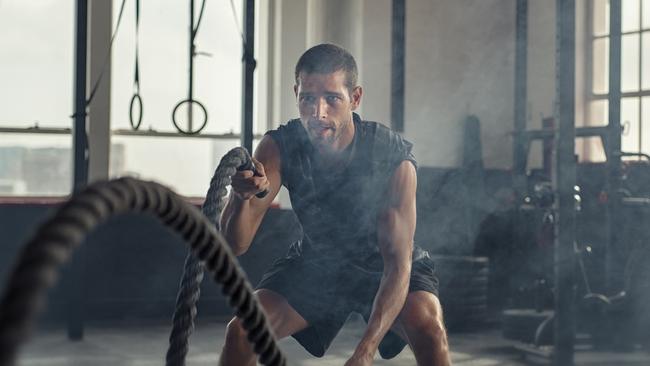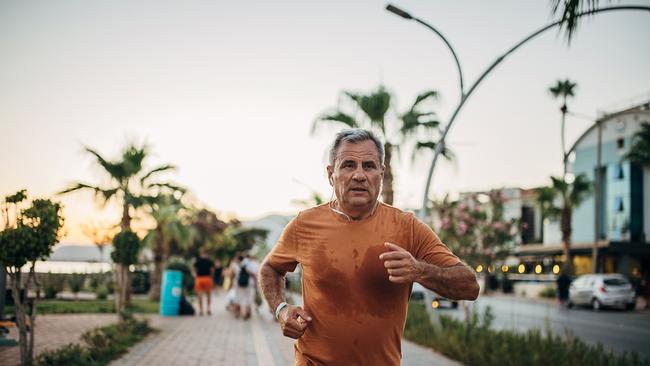Should a workout hurt? And how much pain is too much?
No one ever said that exercise should be easy, but what are the signs that you’re pushing too hard?

Fitness culture places an emphasis on being tough. “Feel the burn”; “hit the wall”; “work until failure”; “pain is temporary” — all are gym maxims that promote the idea that momentary discomfort is worth it for long-term improvements to our health.
But is pain really part of normal fitness progress — or a sign that you risk doing lasting harm? These are some of the signs to pay attention to.
Know your normal
It is important to understand your body’s limits. If you’re new to exercise, it will inevitably take time to develop an awareness of when you’re in real pain, and when your muscles are just aching a little. As a guide: low-level, tolerable pain while working out probably isn’t something to worry about, but a sharp, sudden pain — a runner feeling a twinge in their calf, a footballer experiencing knee pain after a twisting motion — might suggest something more serious.

“If pain worsens, causes swelling or limits movement, it’s worth seeking professional advice,” says Craig Carroll, an osteopath and founder of the Injury Coach clinic. “Ignoring genuine pain can turn a minor issue into a bigger problem.”
What is ‘DOMS’?
Delayed onset muscle soreness — or DOMS — is common after a hard workout. Signs include muscle pain and stiffness, typically starting 24-72 hours after you finish.
“It is normal to experience some degree of discomfort after exercise,” says Sergii Putsov, head of sport science at Torokhtiy Weightlifting. “DOMS signifies micro-trauma in the muscle fibres, which is essential for muscle adaptation and strengthening.” But don’t ignore insistent pain. “Severe pain, or pain persisting beyond five days, could be a sign of an underlying issue that requires medical attention.”

If you’re new to exercise, warming up properly, taking time to learn proper technique and avoiding doing too much too soon can help. A hot bath and a good night’s sleep may also reduce DOMS.
Act your age
As we get older, our bodies naturally change — and while research is still ongoing into how recovery is affected, we do know that collagen production, which is essential for tendon and ligament strength, becomes less efficient with age. This can make these tissues more prone to injury if not properly conditioned.

“Pain with exercise can happen at any age,” Carroll says. “But as we get older, we need to train smarter. You may not tolerate the same loads you once did, so the goal is to keep getting stronger — just in a more methodical way.”
Upping your protein intake can help to promote muscle recovery, while adding in a weekly Pilates or yoga class can help keep tendons supple.
Recovery plan
As some soreness is inevitable, recovery is important. Putsov recommends topical anti-inflammatory gels such as ibuprofen to help reduce localised inflammation, applied two to three times per day or as needed.

Sleep is also a strong foundation for recovery: aim for at least eight hours of quality rest if you can. Massage guns, which vibrate quickly in order to stimulate muscles and increase blood flow, are popular — especially with Instagram influencers — but the personal trainer Martin Sharp urges caution. “Sometimes a massage or massage gun can aggravate the problem rather than alleviate it,” he says.
Get the green light
Carroll recommends using a traffic-light rating to label your pain. On a scale of 1-10, green (0-3) means it’s safe to continue, amber (3-7) means proceed with caution — and if it hits 6 or 7, ease off. Red (7+) means you should stop immediately.
Pushing through pain is a false economy: getting a final rep in today won’t matter if it leaves you injured and out of action tomorrow. “Ignoring pain and continuing to train in the amber-to-red zones significantly increases the risk of injury,” Carroll warns. “Ideally, exercising should help reduce pain over time, not increase it.”
The Times

To join the conversation, please log in. Don't have an account? Register
Join the conversation, you are commenting as Logout